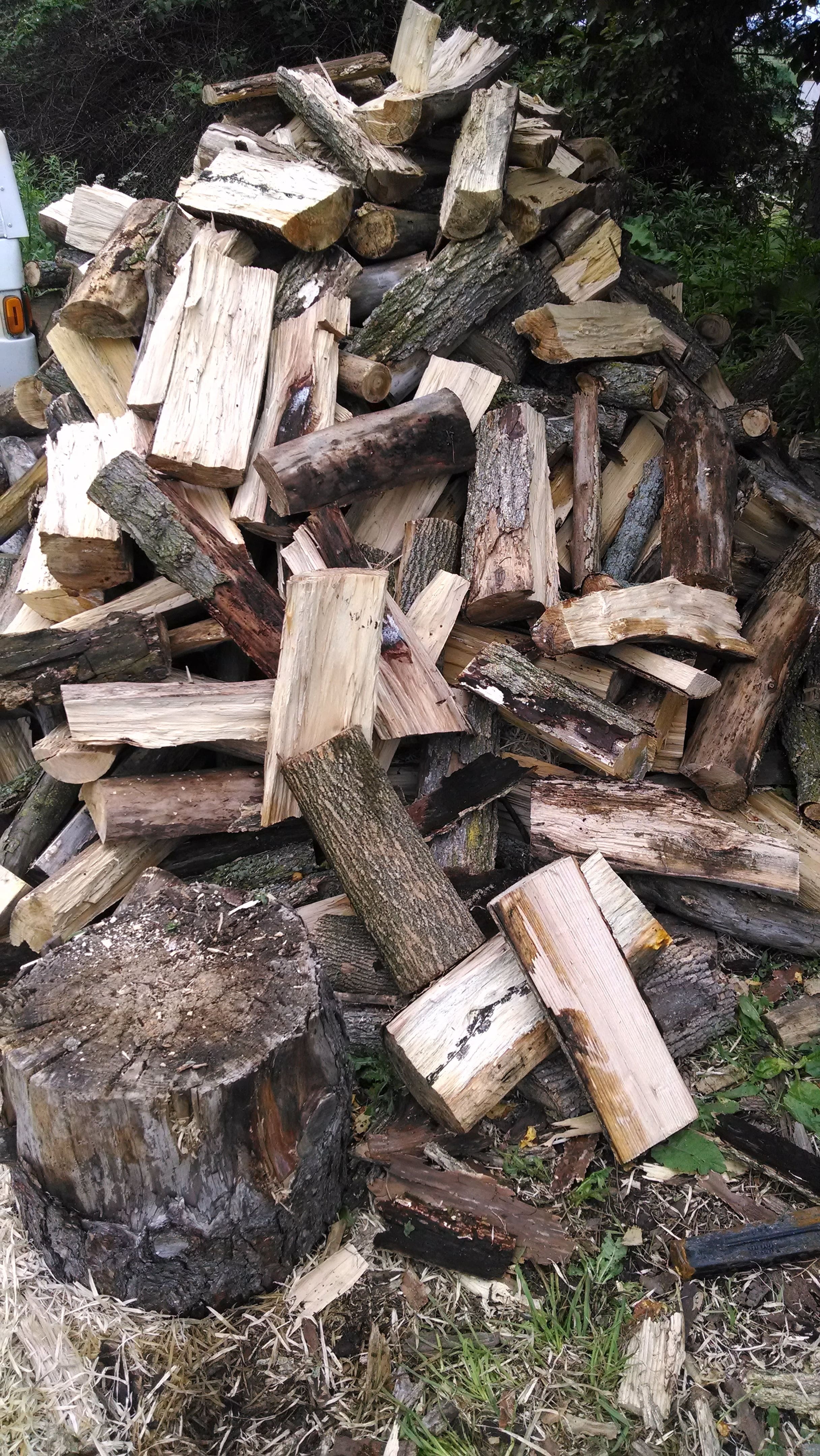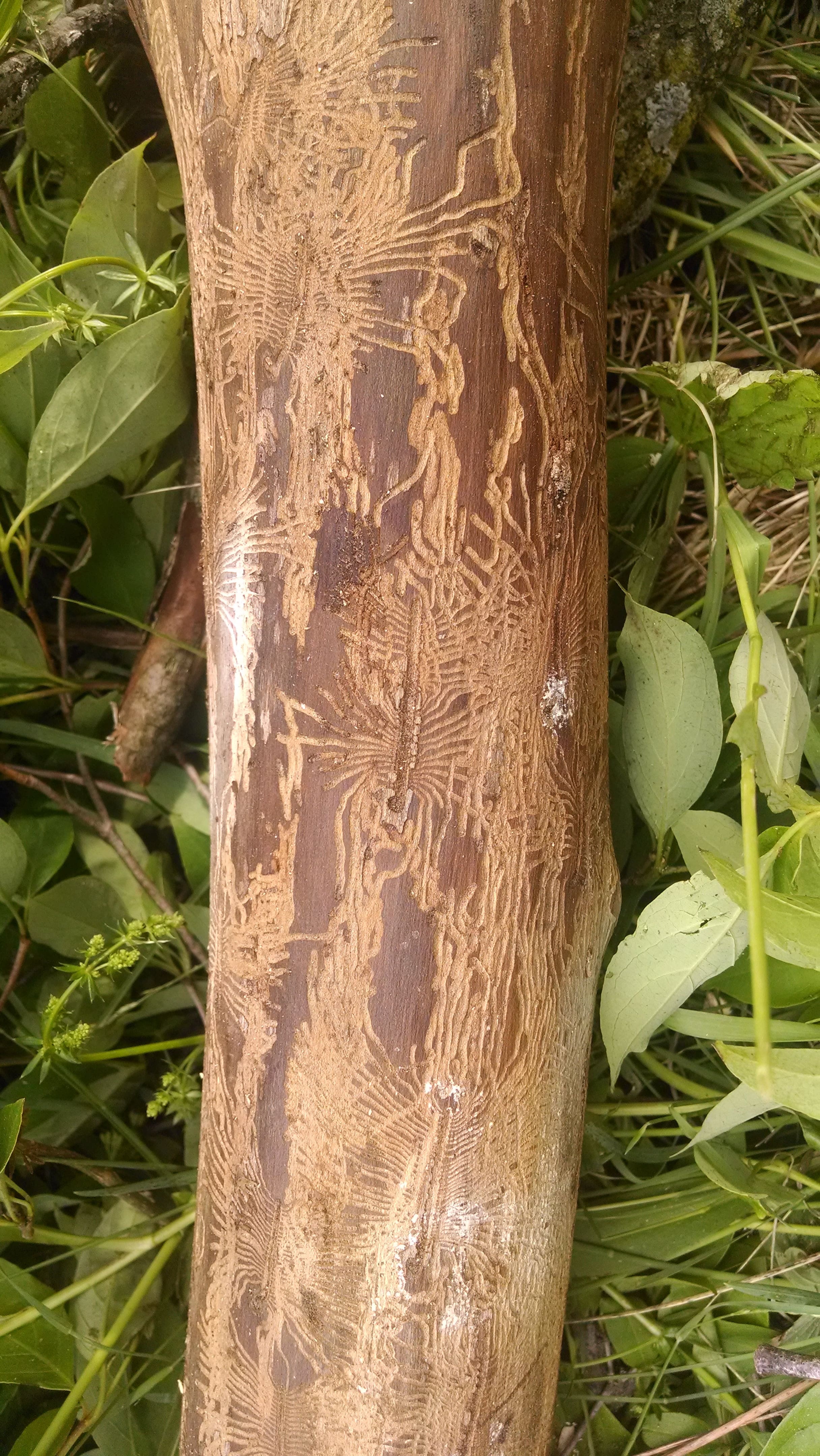The ash trees in our part of NY are dying.
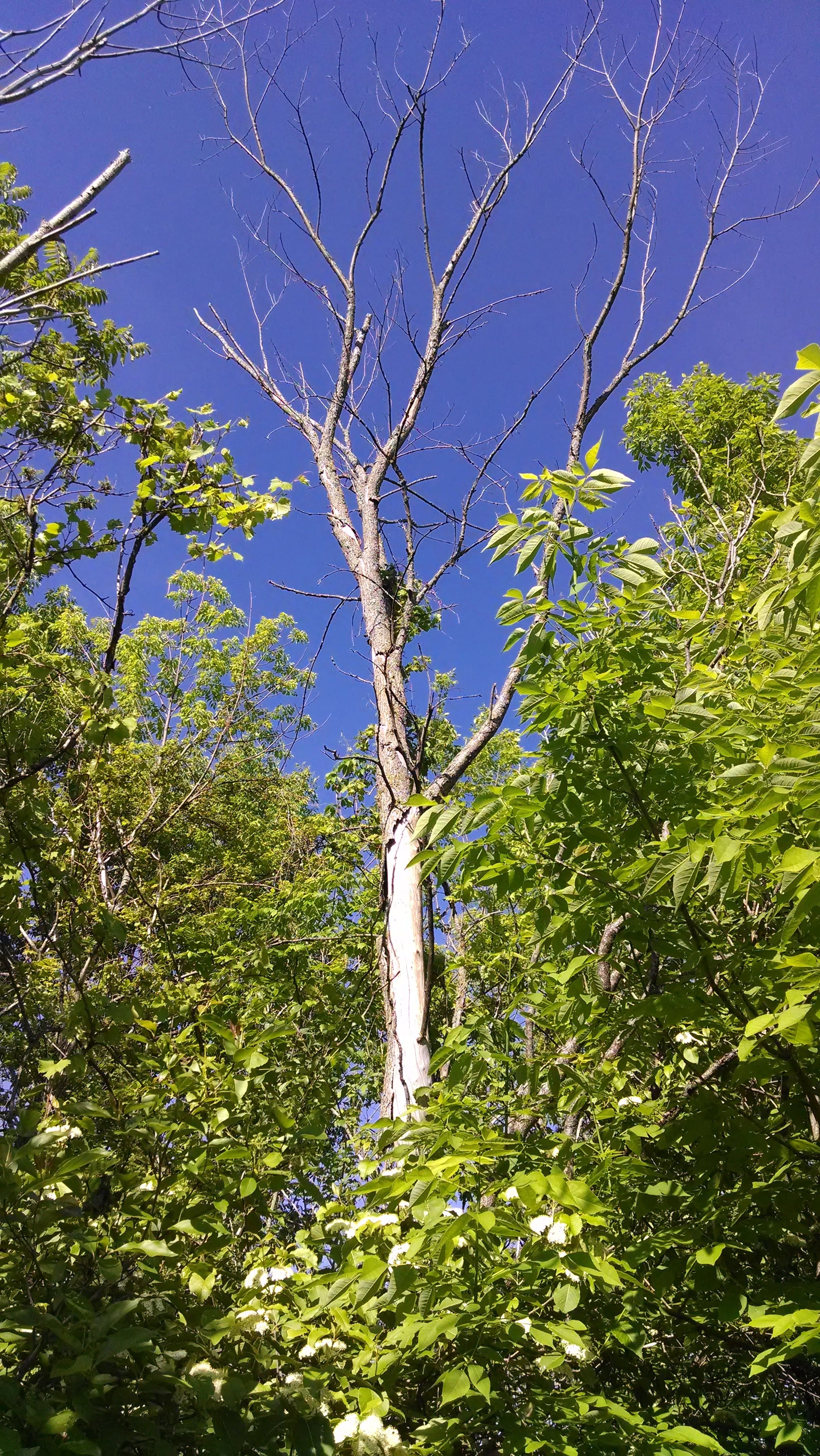
Emerald Ash Borers (EAB) have been killing them. Since the unintentional introduction of the Emerald Ash Borers from Asia in 1990’s, the infestation has spread rapidly. Many foresters believe that a total irradication of the North American ash species may result. During our first summer on the farm we noticed several dead ash trees in the hedgerows. In the years since the problem has become worse. Wherever we drive in our area, we see standing dead ash trees.
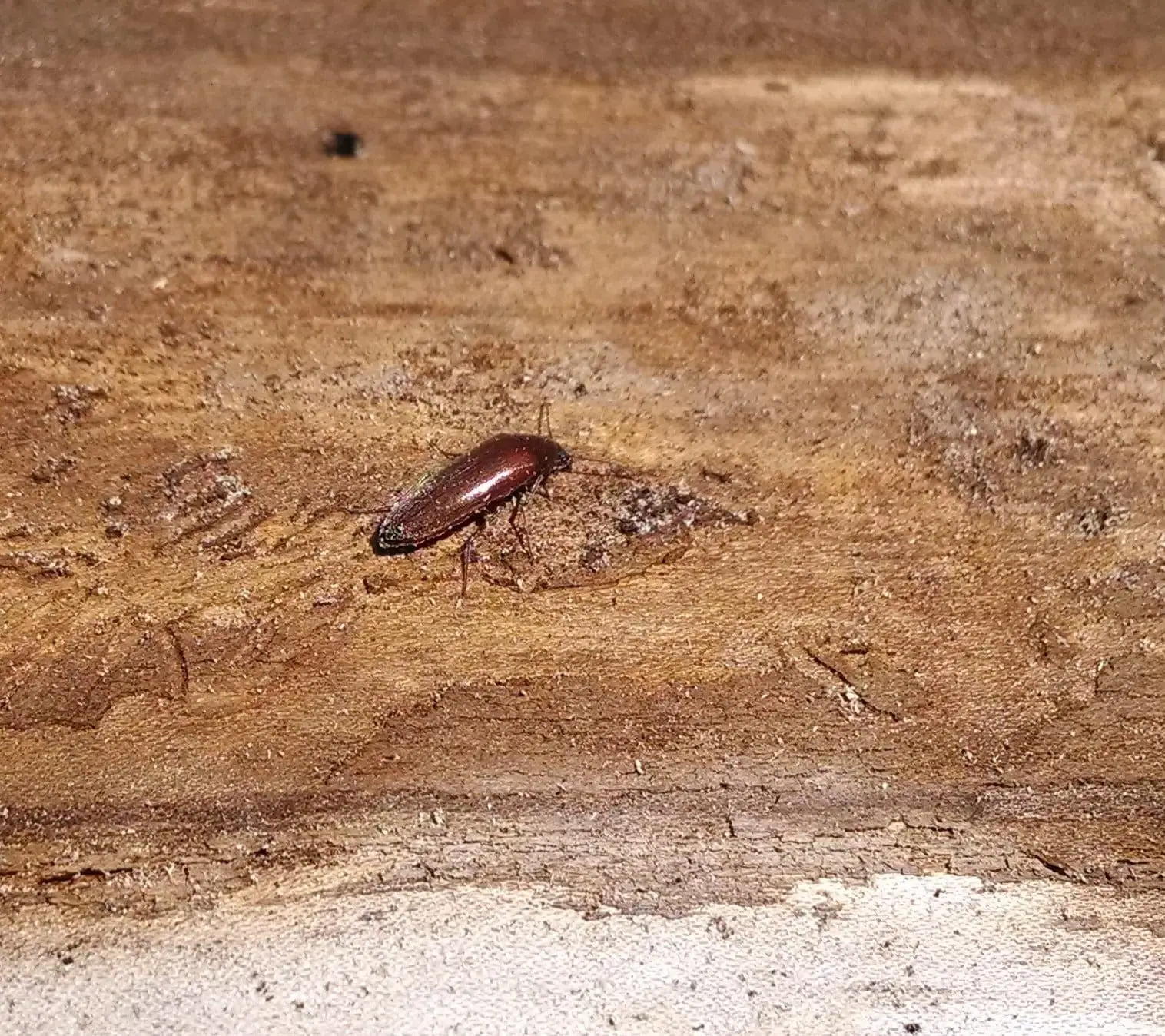
The adults eat some of the leaves, but the main harm to the tree comes from the larvae.
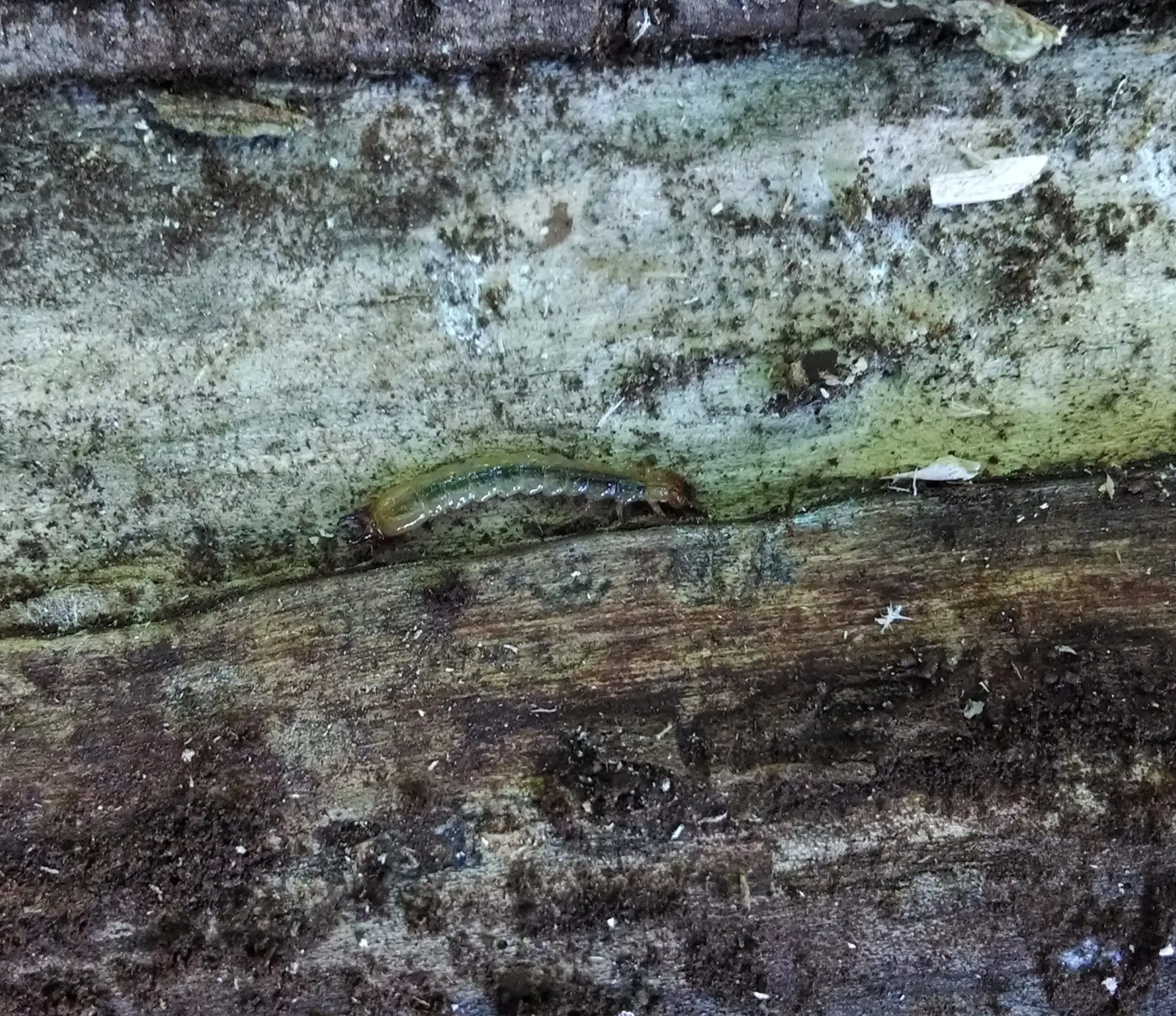
The adult borers drill through the tree and deposit their eggs in the living xylem layer between the bark and last-year’s growth ring. Once hatched, the larvae begin to eat their way all over the tree while being sheltered by the bark. For the tree this is disastrous because the entire vascular system is disrupted. But from the purely aesthetic view, the patterns left as the larvae tunnel along are often striking.
According to the NY DEC’s tree survey, ash makes up 10% of our tree population. Not every ash tree in our area is dead, but the disease seems to be hitting hardest at the middle half of the ash population. The very oldest, largest trees seem to die more slowly, and the very young trees also seem resistant. Perhaps the young trees aren’t as appealing to the bugs.
So for now, we trim out the dead and dying trees. We don’t cut down healthy ash, since we want to give them a fighting chance. Maybe here and there we’ll find a tree that has more resistance to the bugs. But all the dead trees get chopped up for firewood. Ash is a little stringy and thus splitting isn’t as easy as other species, but it puts out a middlin’ amount of heat – about 20% less than red oak but 25% more than pine. It is the wood we have on hand, so that’s what we’ve been burning.
